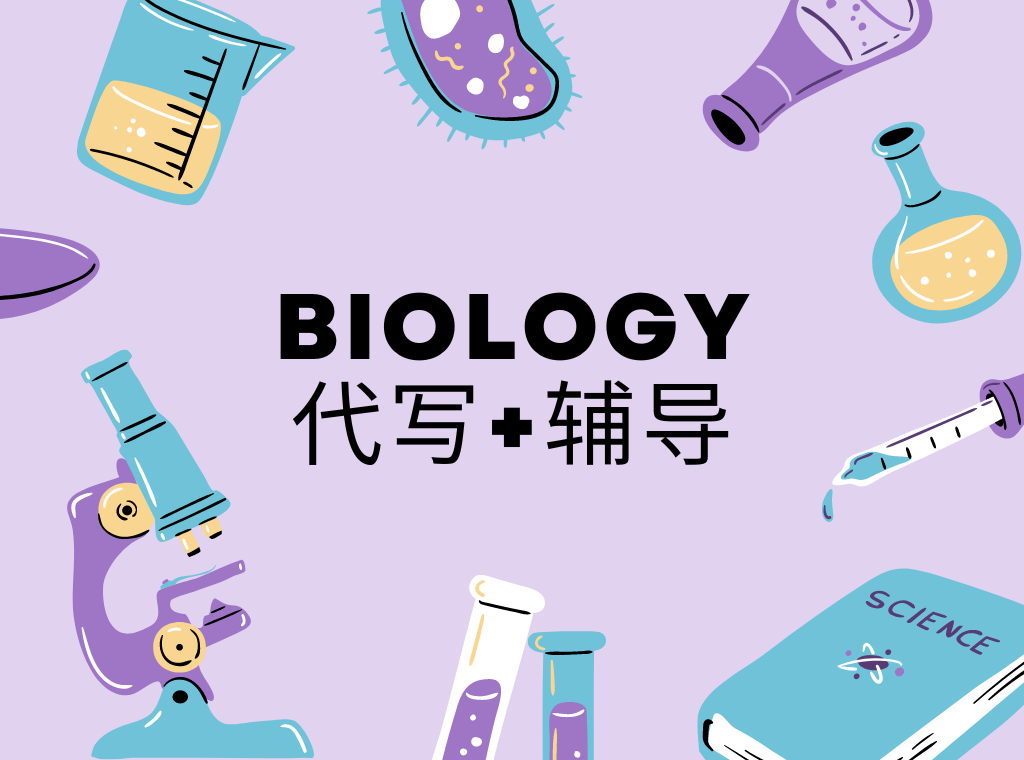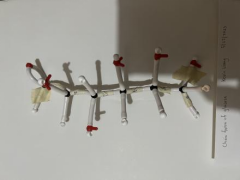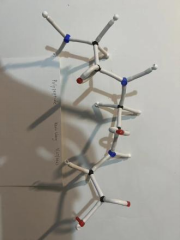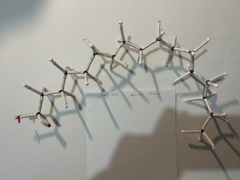


本次的生物代写案例是BIO 1XX LEVEL课程的weekly lab report(实验室报告)。老师的主攻是Biological Engineering,但对最基础的检测生物、解剖知识的lab report作业还是得心应手。鉴于lab report的特殊性,小编将题目和答案直接post出来了。如果大家需要生物学代写,lab report代写,请联系我们!
Biology lab report题目
Pre-laboratory Questions
1. What are the four types of biological macromolecule?
The four types of biological macromolecule include proteins, lipids/fats, carbohydrates, and nucleic acids.
2. What is a functional group?
A functional group is a group atoms inside a molecule that determine the way that the molecule they are in interact with other molecules in the body.
3. Explain the differences between ionic, covalent, polar-covalent, and hydrogen bonds.
Both ionic and covalent bonds are intramolecular bonds existing within the molecules, and they are responsible for the exchange of electrons. The difference between ionic and covalent bonds is that ionic bonds are responsible for the transferring of electrons while covalent bonds involve the sharing of electrons. Electrons are shared unequally between atoms in the polar-covalent bonds. Finally, a hydrogen bond is a weak bond between adjacent molecules based on electrical attractions, and it involves attraction between a slight positive charge and a slight negative charge.
Laboratory Questions
Carbohydrates
1. What structural feature differed between the carbon, hydrogen, oxygen, nitrogen, and phosphorous atom model parts? What did the projections represent?
According to the Elctron-Shell Model and structural formula, the size of carbon, hydrogen, oxygen, nitrogen, and phosphorus atom model parts differ. Besides, the connectivity between these atom model parts differ, in which the number of bonds and the arrangement of atoms are different.
2. What is the ratio of carbon atoms to hydrogen atoms to oxygen atoms in glucose or fructose?
1:2:1
No, because the process hydrolysis would not be able to occur without water
在这里插入一句,生物的lab其实蛮有趣的。在这个基础BIO课的lab中,同学们会用学校提供的kit去组装各种细胞,如Protein,Carb,Lipids。当然同学们也抱怨:这KIT是要钱的啊!(捂嘴笑)。KIT组装的问题及图片如下:
Images – Activity 1
A required part of this laboratory exercise is to capture pictures of the experimental results. Click on the boxes below to insert the required images for this lab.
Note: Failure to submit these images will result in a grade of zero for this lab.
Activity 1: Carbohydrates, Step 10

Activity 2: Proteins, Step 7

Activity 3: Lipids, Step 8

Review Questions(上次Lab Report和Unit的回顾问题)
1. Differentiate between an atom, molecule, and compound.
Atom is the most basic unit and smallest particle of an element. In comparison, molecules consists of a group of two or more atoms, which allow them to have more than one chemical element. A compound consists two or more chemical elements.
2. What is the role of an enzyme in a chemical reaction?
The roles of an enzyme in a chemical reaction include substrate specificity, formation of enzyme-substrate complex, catalysis of reaction, lowering activation energy, and enzyme regeneration.
3. What are some of the unique properties of water that are essential for living things?
Water is natural and universal solvent that can dissolve numerous substances, thus allowing the human body to absorb and distribute nutrients and transport waste products within the body. Water also helps necessary chemical reactions to occur. Besides, water plays an essential role for living things by hydrating the body and helping to maintain the core body temperature.
4. Distinguish between an acid, base, and salt.
Acid produces hydrogen ions when dissolved in water, increasing the concentration of H+ ions in a solution. Base can combine with hydroxide ions when dissolved in water, also increasing the H+ ions concentration in a solution. Salt is the product of neutralization reaction between acids and bases.
5. What is the role of a buffer?
Buffer maintains extracellular and intracellular pH and resists substantial changes in pH when encountering external or internal influences.
6. Describe the functions in the body of the following:
They are the main energy source which can be broken down into glucose, a substance used by the cells to produce ATP. When a person takes/eats too much carbohydrate, the excessive amount of carbohydrate converts to glycogen, which is then stored in many parts of the body for future needs. Carbohydrates can also be stored as fat when an excessive amount of them enter the body.
Lipids are the energy storage in the body. They can be broken down to produce energy when the retaining amount of glucose is low or when a person exercises at a certain intensity for a sustained amount of time.
Proteins help to build muscles. They also act as enzymes to promote biochemical reactions in the body. Besides, proteins provide support to tissues and cells such as skin, ligaments, and tendons.
Nucleic acids serve as the storage of genetic information and help to synthesize proteins.
今天的代写案例分享就到这里。如果大家需要BIOLOGY代写,生物学代写,任何级别的BIO课程代写及辅导,Biostatistics代写,Biochemistry代写,Biological Engineering代写,欢迎联系我们!